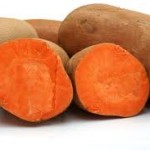Vegetables
go.ncsu.edu/readext?282551
en Español / em Português
El inglés es el idioma de control de esta página. En la medida en que haya algún conflicto entre la traducción al inglés y la traducción, el inglés prevalece.
Al hacer clic en el enlace de traducción se activa un servicio de traducción gratuito para convertir la página al español. Al igual que con cualquier traducción por Internet, la conversión no es sensible al contexto y puede que no traduzca el texto en su significado original. NC State Extension no garantiza la exactitud del texto traducido. Por favor, tenga en cuenta que algunas aplicaciones y/o servicios pueden no funcionar como se espera cuando se traducen.
Português
Inglês é o idioma de controle desta página. Na medida que haja algum conflito entre o texto original em Inglês e a tradução, o Inglês prevalece.
Ao clicar no link de tradução, um serviço gratuito de tradução será ativado para converter a página para o Português. Como em qualquer tradução pela internet, a conversão não é sensivel ao contexto e pode não ocorrer a tradução para o significado orginal. O serviço de Extensão da Carolina do Norte (NC State Extension) não garante a exatidão do texto traduzido. Por favor, observe que algumas funções ou serviços podem não funcionar como esperado após a tradução.
English
English is the controlling language of this page. To the extent there is any conflict between the English text and the translation, English controls.
Clicking on the translation link activates a free translation service to convert the page to Spanish. As with any Internet translation, the conversion is not context-sensitive and may not translate the text to its original meaning. NC State Extension does not guarantee the accuracy of the translated text. Please note that some applications and/or services may not function as expected when translated.
Collapse ▲Beans
 Good Agricultural Practices for the Production and Handling of Green Beans and Peas.
Good Agricultural Practices for the Production and Handling of Green Beans and Peas.
This bi-fold pamphlet from N.C. State focuses on how to best reduce the risks of contamination through preventative on-farm measures.
Green Onions
 FDA Commodity Specific Food Safety Guidelines for the Production, Harvest, Post-Harvest, and Value-Added Unit Operations of Green Onions (February 2010)
FDA Commodity Specific Food Safety Guidelines for the Production, Harvest, Post-Harvest, and Value-Added Unit Operations of Green Onions (February 2010)
Leafy Greens
This document provides voluntary recommended guidelines on food safety practices that are intended to minimize the microbiological hazards association with fresh and fresh-cut lettuce/leafy greens products.
California Leafy Greens Marketing Agreement Commodity Specific Food Safety (2019)
Good Agricultural Practices for the Production and Handling of Cabbage and Leafy Greens (PDF) This bi-fold pamphlet from N.C. State focuses on how to best reduce the risks of contamination through preventative on-farm measures.
Sprouts
Microbiological Safety Evaluations and Recommendations on Sprouted Seed
Comprehensive safety and production guidelines for sprouts developed by the FDA.
Sweet Potatoes
Resources are provided for food safety practices in sweet potato production along with a crisis communication plan specific to the sweet potato industry.
Tomatoes
Tomato Resources
There are numerous resources for tomatoes that include commodity specific food safety guidance for the fresh tomato supply chain, NC tomato industry fresh produce safety survey, tomato good agricultural practices (TGAPs) and various other guidance documents that offer assistance to the tomato industry.
General Vegetable Guidance
Other Commodity FDA Guidance Documents
Good Agricultural Practices for the Production and Handling of Cucumbers, Eggplants, Squash, Peppers and Sweet Corn (PDF). This bi-fold pamphlet from N.C. State focuses on how to best reduce the risks of contamination through preventative on-farm measures.


